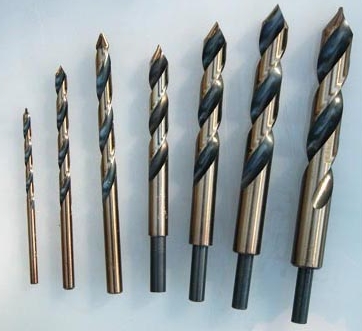Difference between revisions of "Drilling Plastic"
From Ed's Mediawiki
| Line 3: | Line 3: | ||
</div> | </div> | ||
| − | Using a regular twist drill in plastic is a problem because the cutting edge takes too big a bite on each rotation of the drill. The best way to drill plastic is with special drill bits designed for plastic. These bits use a scraping action instead of slicing into the material, and they have a much more acute angle on the tip so that the hole is more gradually enlarged than with a metal cutting 118 degree bit. One brand is "Plexi Point," shown below. | + | Using a regular twist drill in plastic is a problem because the cutting edge takes too big a bite on each rotation of the drill. The best way to drill plastic is with special drill bits designed for plastic. These bits use a scraping action instead of slicing into the material, and they have a much more acute angle on the tip so that the hole is more gradually enlarged than with a metal cutting 118 or 135 degree bit. One brand is "Plexi Point," shown below. |
[[File:Plexi point drills.jpg]] | [[File:Plexi point drills.jpg]] | ||
| + | |||
| + | Regular high speed drill bits can be ground to cut plastic. See [http://www.home-machine-shop.com/Down-Load/ACRYLIC_Drilling.pdf this site] for details. | ||
Revision as of 15:46, 9 September 2011
Using a regular twist drill in plastic is a problem because the cutting edge takes too big a bite on each rotation of the drill. The best way to drill plastic is with special drill bits designed for plastic. These bits use a scraping action instead of slicing into the material, and they have a much more acute angle on the tip so that the hole is more gradually enlarged than with a metal cutting 118 or 135 degree bit. One brand is "Plexi Point," shown below.
Regular high speed drill bits can be ground to cut plastic. See this site for details.
